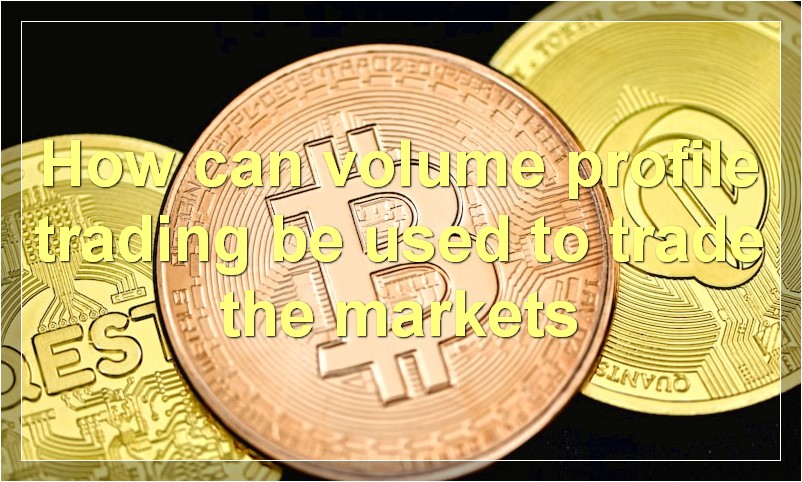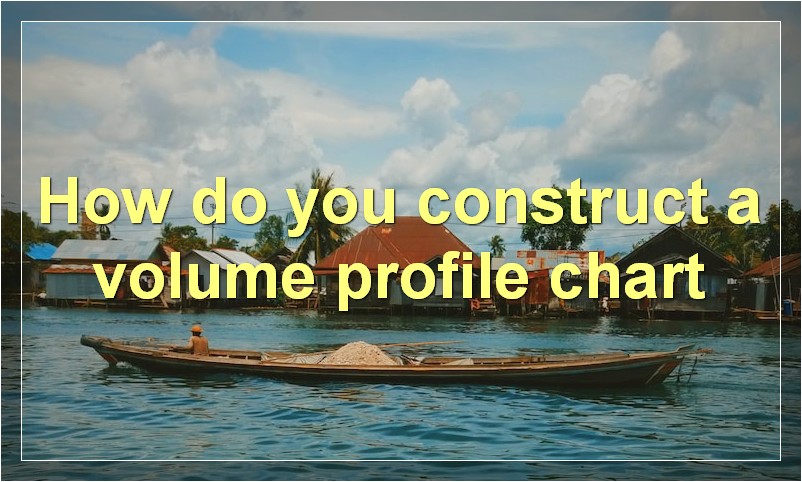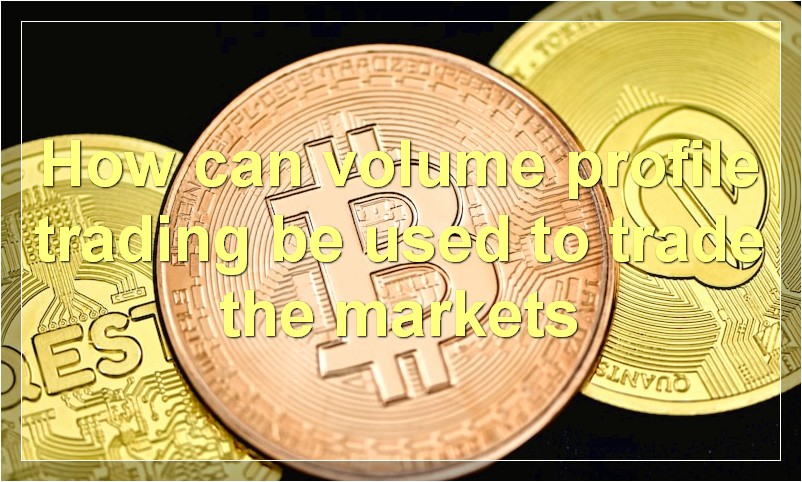If you’re looking to get started in volume profile trading, this article is for you. We’ll cover the basics of what volume profile trading is, how it works, and why it can be an effective strategy for traders.
What is volume profile trading
Volume profile trading is a type of trading that uses the volume traded at different price levels to make decisions.
The volume profile is a graphical representation of how many contracts or shares are traded at different prices. The horizontal axis represents the price, and the vertical axis represents the volume.
There are many ways to use the volume profile to make trading decisions, but one common method is to look for areas of high volume and use them as potential support and resistance levels.
Another way to use the volume profile is to look for areas of low volume and use them as potential entry or exit points.
The volume profile can be a helpful tool for both long-term and short-term traders. It can be used to make decisions about when to enter or exit a trade, as well as where to place stop-loss and take-profit orders.
How can volume profile trading be used to trade the markets

Volume profile trading is a type of trading that uses the volume of a security to make decisions. It is based on the belief that the amount of trading activity in a security can be used to predict future price movements.
Volume profile trading is a tool that can be used by traders to make better informed decisions. By understanding how volume affects price, traders can better anticipate where prices are likely to go. This type of trading can be used in any market, but is especially useful in markets where there is a lot of activity.
What are the benefits of volume profile trading
Volume profile trading is a type of trading that uses volume data to make decisions. This type of trading can be beneficial for a number of reasons.
One benefit of volume profile trading is that it can help you identify areas of support and resistance. By looking at the volume data, you can see where buyers and sellers are most active and make decisions accordingly.
Another benefit of volume profile trading is that it can help you time your entries and exits. By looking at the volume data, you can get a better idea of when the market is most active and make your trades accordingly.
Finally, volume profile trading can help you manage your risk. By looking at the volume data, you can see where the market is most volatile and adjust your position size accordingly.
What are the risks associated with volume profile trading
When it comes to trading, there is always risk involved. This is especially true when it comes to volume profile trading. Some of the risks associated with this type of trading include:
-Market risk: This is the risk that the market will move against you. This is always a possibility in any type of trading, but it is especially important to be aware of in volume profile trading.
-Liquidity risk: This is the risk that you will not be able to find a buyer or seller when you want to. This can be a problem in volume profile trading, as it can be difficult to find someone to take the other side of your trade.
-Execution risk: This is the risk that your trade will not be executed at the price you want. This can be a problem in volume profile trading, as the market can be very volatile and prices can move quickly.
-Counterparty risk: This is the risk that the person you are trading with will not honor their obligations. This can be a problem in volume profile trading, as there is often a lot of money at stake.
All of these risks should be considered before engaging in volume profile trading. While it can be a profitable way to trade, it is important to be aware of the risks involved.
What is the best time frame to use when volume profile trading
There is no definitive answer to this question as different traders will have different opinions on the matter. Some traders may find that using a shorter time frame, such as 1-hour or 4-hour charts, gives them a more accurate picture of market activity and allows them to make better-informed trading decisions. Others may prefer to use a longer time frame, such as daily or weekly charts, to take a more strategic approach to their trading. Ultimately, it is up to the individual trader to experiment with different time frames and see which one works best for their particular trading style.
How do you construct a volume profile chart

When it comes to trading, one of the most important things to understand is volume. Simply put, volume is the number of shares or contracts that trade in a given period of time. But as any trader knows, volume can tell you a lot more than just how many shares have traded hands. That’s where the volume profile comes in.
A volume profile is a chart that shows the distribution of trading volume at different price levels. In other words, it shows you how much volume has been traded at each price level. This information can be extremely valuable to traders, as it can give them an idea of where the market is “sticking” or where there is a lot of buying or selling pressure.
There are a few different ways to construct a volume profile chart, but the most common method is to use a range of prices and then plot the volume at each price level. This can be done using a candlestick chart or a bar chart. Whichever method you use, the key is to make sure that the volume is represented correctly.
Once you have your volume profile chart, you can start to look for patterns and trends. For example, if you see a lot of buying pressure at a certain price level, that may be an indication that the market is about to move higher. Alternatively, if you see a lot of selling pressure at a certain price level, that could be an indication that the market is about to move lower.
Of course, no single indicator is ever 100% accurate, so it’s important to use the volume profile in conjunction with other indicators and analysis techniques. But if used correctly, the volume profile can be a powerful tool in your arsenal.
What do the different parts of a volume profile chart represent
The volume profile chart is a technical analysis tool that shows the volume of trading activity at different prices for a given security. The volume profile is represented by a histogram, with the height of the bars representing the volume traded at each price level.
The volume profile can be used to identify trading opportunities and market trends. It can also be used to assess the liquidity of a security, and to make decisions about entry and exit points.
The volume profile chart is divided into three parts:
The body: This is the part of the chart that shows the actual volume traded at each price level.
The bid/ask: This is the part of the chart that shows the bid and ask prices for the security.
The tail: This is the part of the chart that shows the volume traded outside of the body.
How can you use volume profile charts to make trading decisions
Volume profile charts are a type of chart that shows the volume of trading activity for a security over time. The volume profile chart can be used to make trading decisions by showing the trader where the most trading activity is taking place. The volume profile chart can also show the trader where the most liquidity is in the market.
What other indicators can be used in conjunction with volume profile charts
In addition to volume profile charts, traders can use a number of other indicators to make decisions about their trades. Some of these indicators include price action, moving averages, and momentum. Each indicator has its own strengths and weaknesses, so it’s important to use a combination of indicators to get the most accurate picture possible.
Are there any software programs that can help with volume profile trading
There are many software programs that can help with volume profile trading. Some of these programs are free, while others must be purchased. Many brokerages and trading platforms offer volume profile tools as well.

